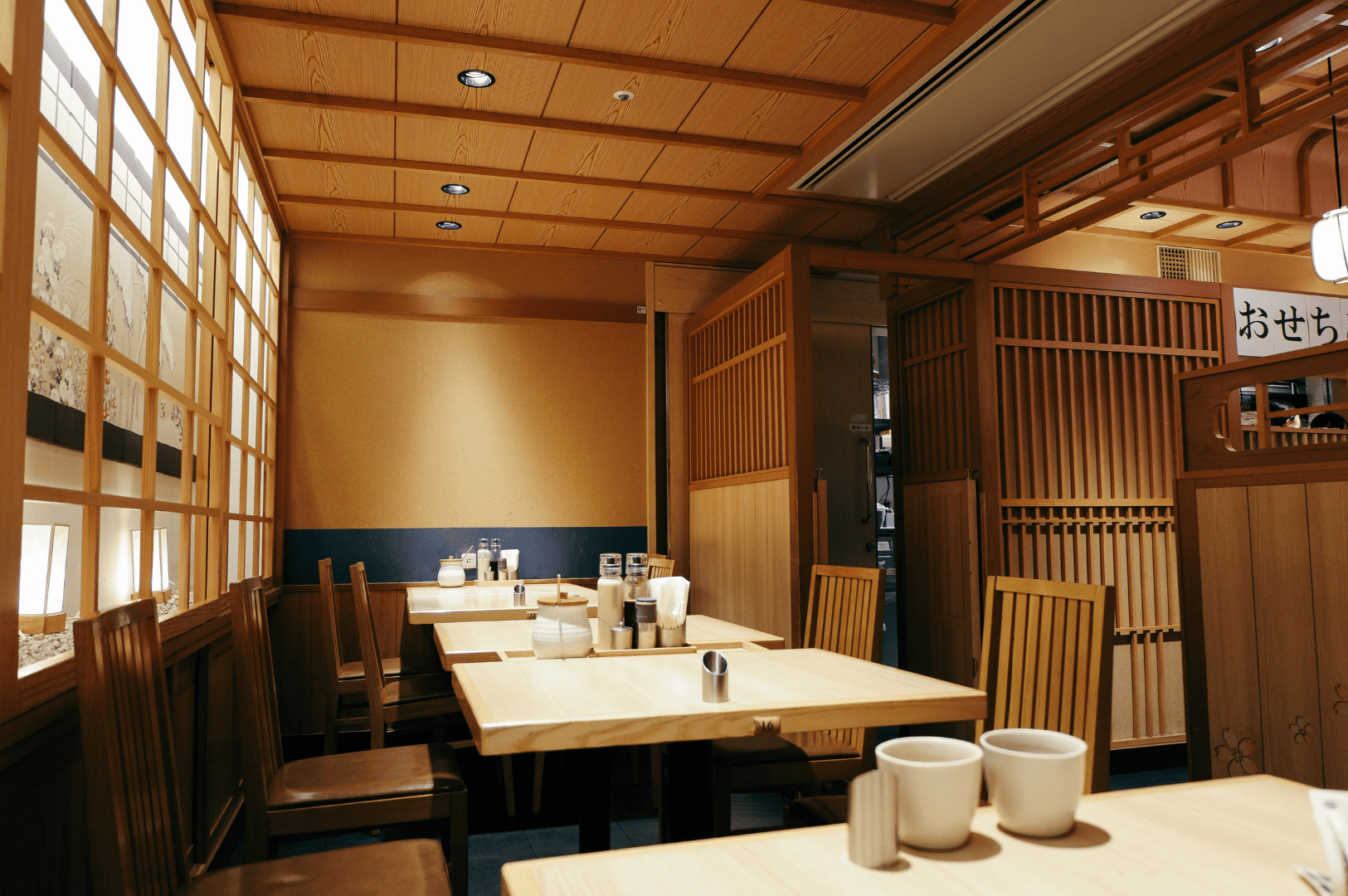In a bustling city like Singapore, creating a dining sanctuary where guests can escape and focus on their culinary experience is a powerful differentiator. It is important to consider interior restaurant design in Singapore, as the location greatly influences both the design approach and guest expectations. Japanese minimalist design offers a compelling solution, transforming a simple meal into a serene and memorable event.
This approach goes beyond just aesthetics; it’s a philosophy that prioritizes tranquility, quality, and an uncluttered atmosphere, allowing your food to take center stage. For restaurant owners, this is an effective interior restaurant design strategy that fosters a unique and calming ambiance.
This design philosophy is rooted in principles like wabi-sabi—the art of finding beauty in imperfection and transience—and ma, the concept of negative space. Wabi-sabi encourages the use of natural, authentic materials that age gracefully, while ma emphasizes the importance of the empty space between objects, creating a sense of calm and order.
By embracing these ideas, you can craft a dining environment that feels both sophisticated and deeply restorative. This ensures a seamless and memorable dining experience for every guest.
Key Elements of Japanese Minimalist Interior Design
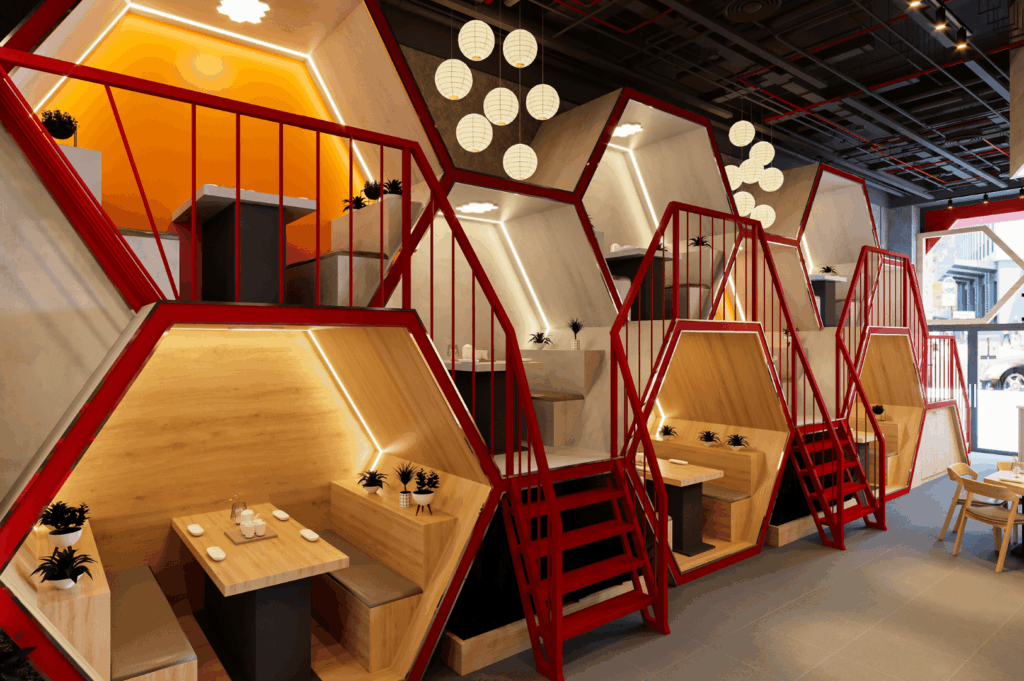
Achieving a Japanese minimalist aesthetic involves careful planning and having a clear plan to reach the ideal restaurant design. It is essential to strike the right balance between aesthetics and functionality, ensuring that decor, lighting, and furniture work harmoniously to create an inviting yet practical space. Each component should contribute to a cohesive and tranquil atmosphere that enhances the dining experience. The following tips will help guide you through the design process to achieve the ideal Japanese minimalist restaurant interior.
Natural Materials
The foundation of this style is a deep respect for nature. Incorporating plants and natural decor elements, such as leaves in art installations or design motifs, can further enhance the connection to nature and reinforce the minimalist aesthetic. Incorporate materials like light-colored woods (such as hinoki, maple, or bamboo), stone, paper, and natural textiles. These materials add warmth, texture, and a connection to the outdoors, creating a space that feels grounded and authentic. Think about wooden tabletops, stone counters, or linen upholstery.
Neutral Color Palettes
Minimalism thrives on a restrained color scheme. Stick to neutral and earthy tones like beige, gray, white, and soft browns. These colors create a serene backdrop that doesn’t compete with the food or the diners. Accent colors can be introduced subtly through art or tableware, but the overall palette should remain calm and muted.
Clean Lines and Simplicity
This design for a restaurant is defined by its clean, uncluttered lines. Furniture and architectural details should be simple, functional, and free of excessive ornamentation. Minimalist architecture, along with features such as galleries or arches, can further enhance the sense of order and harmony by integrating structural elements that support both aesthetic appeal and functional flow.
The focus is on the form and function of each piece, contributing to an overall sense of order and harmony within the space.
Thoughtful Lighting
Lighting plays a crucial role in setting the mood. Use soft, ambient lighting to create a warm and inviting glow. Natural light is paramount, so maximize it where possible. For artificial lighting, consider fixtures made from natural materials like paper washi lamps or simple, sculptural pendants that provide focused light over tables without overwhelming the space. Avoid lighting that is too dim, as inadequate illumination can negatively impact the restaurant’s atmosphere and guest comfort.
Practical Features to Consider
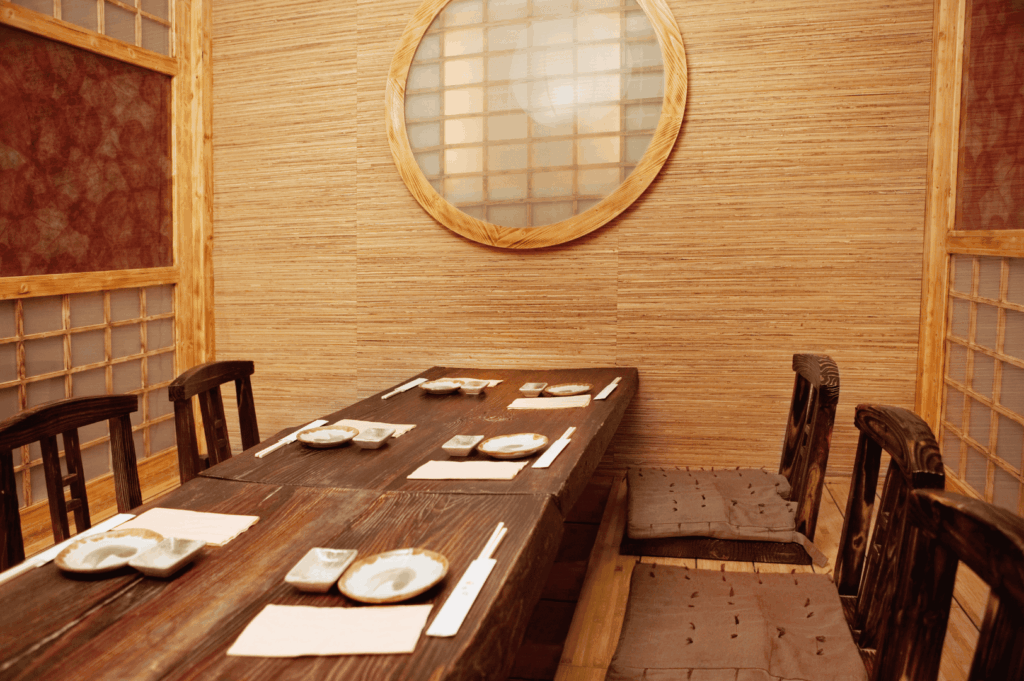
Bringing the Japanese minimalist aesthetic to life involves incorporating specific, iconic features. These elements not only enhance the visual appeal but also contribute to the unique dining experience you want to offer. Careful planning of different areas, such as the kitchen, bar, and back-of-house, is essential to cater to both guests and staff, supporting smooth operations and efficient service.
- Low Dining Tables: For an authentic touch, consider incorporating a section with zaisu (legless chairs) and low tables. This traditional seating arrangement can appeal to families and creates a more intimate, communal dining experience.
- Shoji Screens: These translucent paper screens are perfect for dividing spaces without blocking light. They add a layer of privacy and visual interest while maintaining an open, airy feel. When installing features like shoji screens, ensure accessibility for customers with disabilities so everyone can comfortably navigate the space.
- Minimal Floral Arrangements (Ikebana): Instead of large, elaborate bouquets, opt for simple, intentional floral arrangements known as ikebana. A single branch or a few carefully placed blooms can make a powerful statement.
- Handcrafted Ceramics: The choice of tableware is an extension of the design. Serve your dishes on handcrafted, imperfect ceramics that reflect the wabi-sabi philosophy. This small detail elevates the meal and reinforces your commitment to quality.
- Tatami Flooring: While a full tatami room might be a significant investment, you can incorporate tatami mats in a specific private dining area to offer a traditional and exclusive experience.
By thoughtfully integrating these features into your restaurant’s design, you help customers enjoy an appealing and inclusive dining experience that supports smooth operations and caters to a diverse clientele.
Adapting Minimalism for Singapore’s Climate and Budget
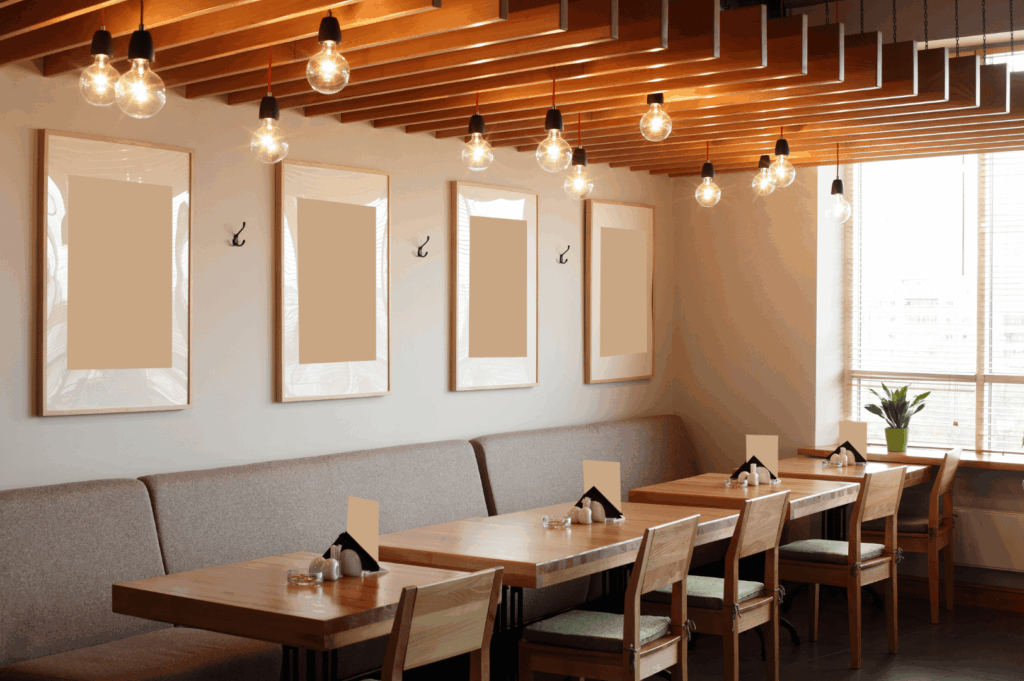
Singapore Interior Restaurant Design – understanding the minimalist concept
Implementing a Japanese interior restaurant design in Singapore requires some practical considerations. Given the tropical climate, choose woods and materials that are resistant to humidity. Bamboo, for example, is a sustainable and durable option that works well. Ensure good ventilation to maintain a comfortable environment.
Singapore Restaurant Design
From a budget perspective, minimalism can be cost-effective as it focuses on “less is more.” Invest in a few high-quality, signature pieces of furniture or lighting fixtures rather than filling the space with cheaper items. You can source locally crafted furniture and ceramics to support local artisans and manage costs effectively.
Additionally, incorporating thoughtful design elements such as ramps not only enhances accessibility for all guests, including those with disabilities, but also ensures compliance with regulations, preventing costly delays during inspections or openings. Planning for smooth transitions and avoiding unnecessary obstacles helps maintain efficient flow throughout the restaurant, contributing to both guest comfort and operational effectiveness.
Balancing Minimalism with Restaurant Functionality
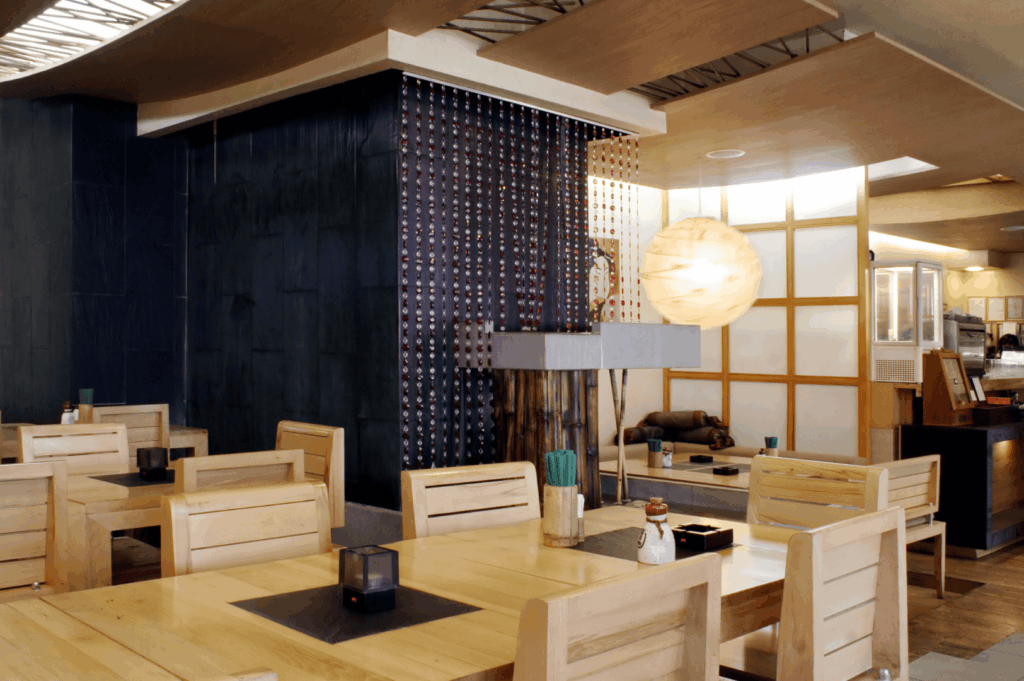
A successful design for a restaurant must be as functional as it is beautiful. Minimalism’s focus on clean, open spaces naturally supports an efficient workflow. Ensure that your layout allows for easy movement for both staff and guests. A well-designed layout enhances the flow and comfort of everyone in the space, supporting smooth operations and a pleasant dining experience.
Storage is key in a minimalist space; integrate concealed storage solutions to keep clutter out of sight. The goal is to create a space that feels calm and orderly without sacrificing the practical needs of a busy restaurant.
Careful planning is important to avoid common mistakes that can disrupt both aesthetics and efficiency. For instance, purchasing furniture before consulting an expert can lead to poor layout choices and hinder smooth operations. Every design choice should serve a purpose, contributing to both the aesthetic and the operational efficiency of the establishment.
Conclusion – Restaurant Interior Design
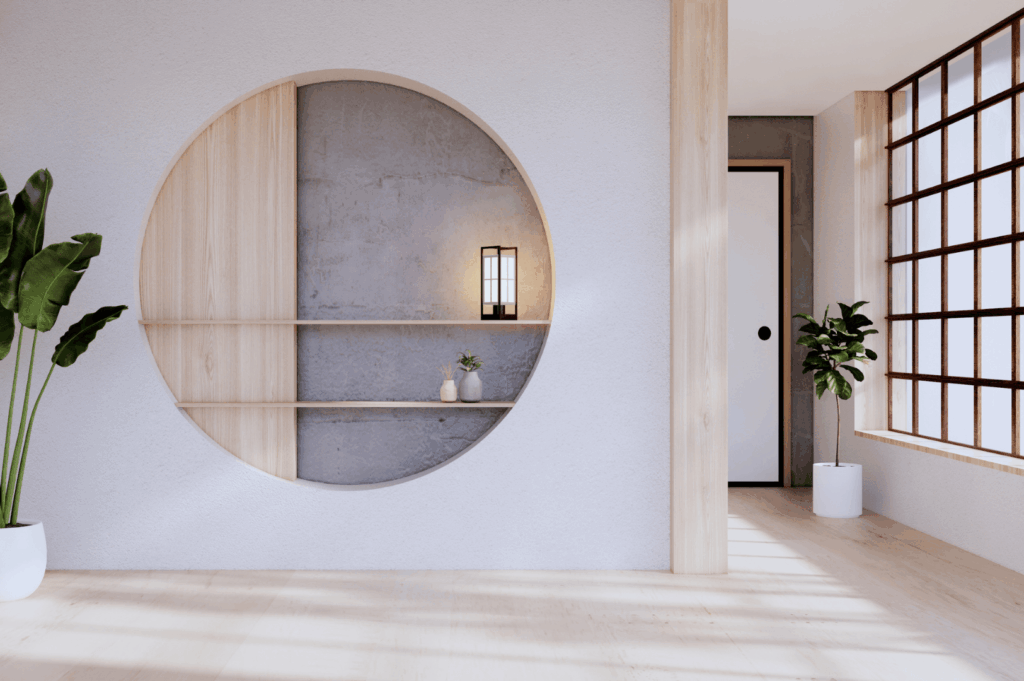
Incorporating Japanese minimalist design principles into your restaurant is more than a stylistic choice; it’s a way to create a powerful and lasting impression on your guests. By focusing on natural materials, clean lines, and intentional simplicity, you can craft a serene atmosphere that allows your culinary creations to shine.
This thoughtful approach to interior restaurant design not only enhances the dining experience but also sets your establishment apart in a competitive market. It creates an ambience that invites guests to relax and fully enjoy their visit, stimulating their appetite through a harmonious blend of aesthetics and functionality.
By embracing these design elements, you build a unique brand identity that reflects your commitment to exceptional hospitality and quality cooking. Your venue becomes more than just a place to eat—it transforms into a memorable journey for every guest, inspiring loyalty and word-of-mouth praise.
As the world’s dining scene evolves, drawing inspiration from minimalist design can help your restaurant remain relevant and appealing. Consider these elements in your next renovation project to build a space that is both beautiful and purposefully designed for success.
For more insights on creating exceptional dining spaces, explore our Design Guide at Restaurant Renovations, where we share strategies to help you transform your vision into a restaurant that truly stands out.
